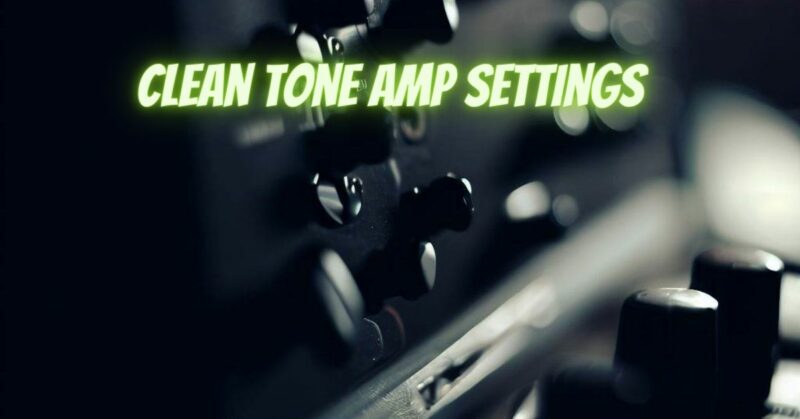Clean tones are the foundation of many musical genres, offering a pristine and articulate canvas for your guitar’s sound to shine. Whether you’re strumming chords, playing intricate melodies, or using clean tones as a platform for effects, achieving the perfect clean tone amp settings is essential. In this article, we’ll delve into the nuances of clean tones and guide you through the process of dialing in those crystal-clear sounds.
1. Starting with a Blank Canvas:
- Set All Knobs to 12 O’clock: Begin by resetting all the knobs on your amp to their midpoint positions. This neutral starting point ensures that you’re working from a clean slate.
- Choose a Clean Channel: If your amp has multiple channels, select the clean channel to build your clean tone upon.
2. Taming the Gain:
- Keep Gain Low: Start with the gain (or drive) control set to a low level. Clean tones thrive on minimal distortion, so avoid excessive gain settings.
3. Crafting the EQ:
- Balancing Bass and Treble: Start by setting your bass and treble controls at 12 o’clock. Adjust the bass to add warmth without overwhelming the sound, and adjust the treble to introduce clarity without excessive brightness.
- Midrange Magic: The midrange control plays a crucial role in clean tones. Experiment with boosting the midrange slightly to give your tone presence and definition.
4. Setting the Volume:
- Moderate Volume: Set the volume control to a level that’s appropriate for your practice environment. Clean tones don’t necessarily require high volume, but they should be audible and balanced.
5. Reverb and Effects:
- Delicate Reverb: A touch of reverb can add depth and space to your clean tone. Use a subtle reverb setting to maintain the clarity of the sound.
- Modulation Effects: If you’re using modulation effects like chorus or phaser, apply them sparingly to enhance the clean tone without overpowering it.
6. Room Acoustics:
- Positioning and Reflections: Consider the room you’re playing in. Position your amp in a way that minimizes unwanted reflections and maximizes the natural sound of your clean tone.
7. Listening and Adjusting:
- Refining Your Sound: Play different chord progressions, melodies, and single notes to evaluate how your clean tone sounds across various registers of the guitar.
- Ear Training: Train your ears to listen for any undesirable frequencies or imbalances in the tone. Adjust the EQ controls accordingly to address these issues.
Achieving clean tone amp settings requires a combination of experimentation, careful listening, and an understanding of how each control affects your sound. By starting with a neutral base, taming the gain, crafting a balanced EQ, setting appropriate volume levels, and adding subtle effects, you can create clean tones that are articulate, clear, and versatile. Remember that the quest for the perfect clean tone is a journey, and your settings might evolve as you become more attuned to your instrument and preferences.


